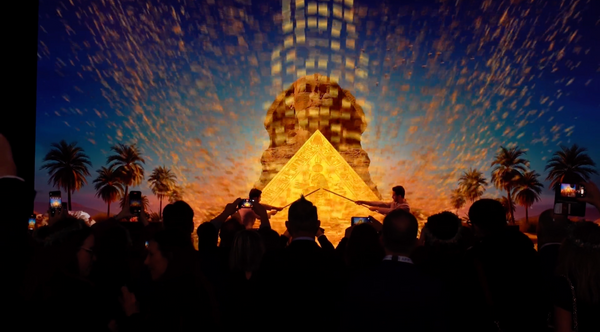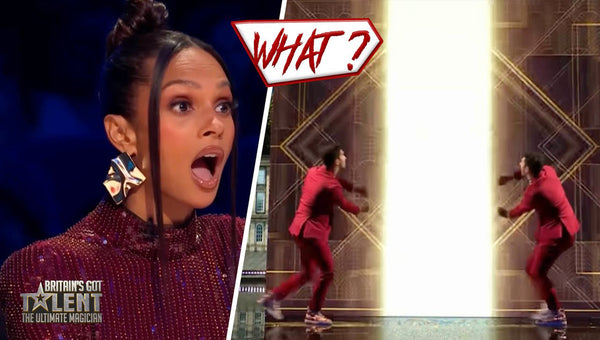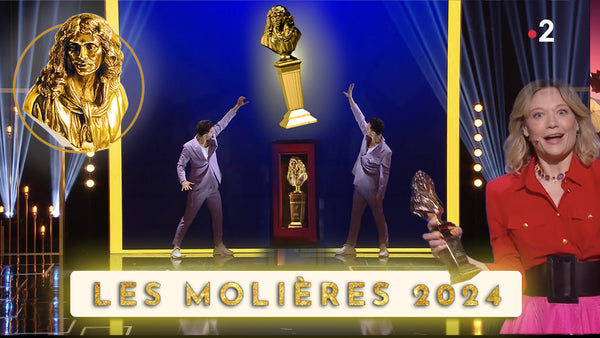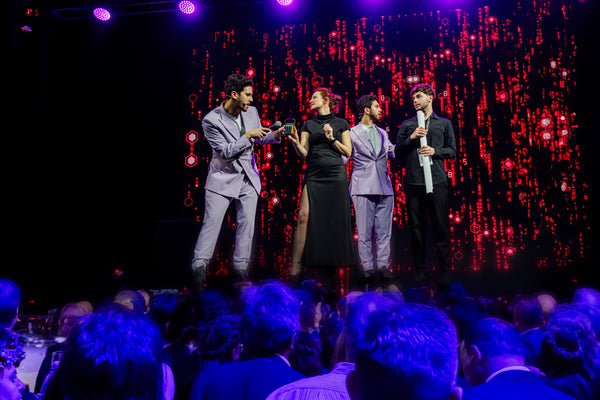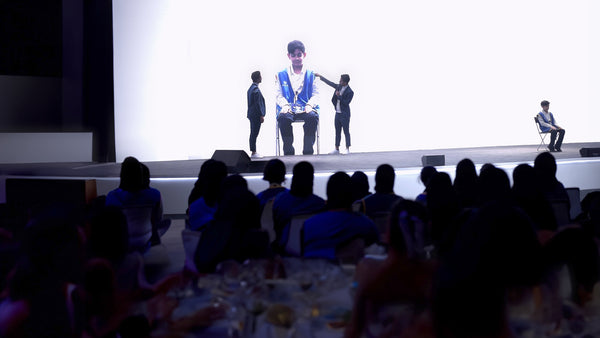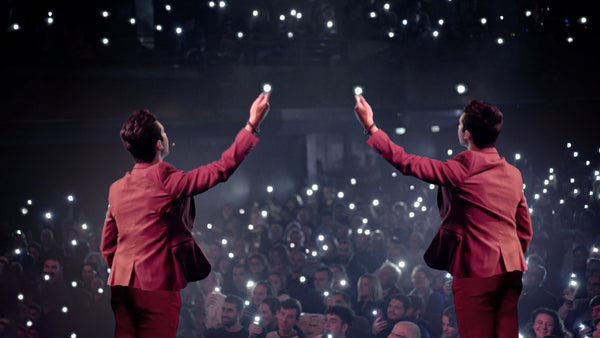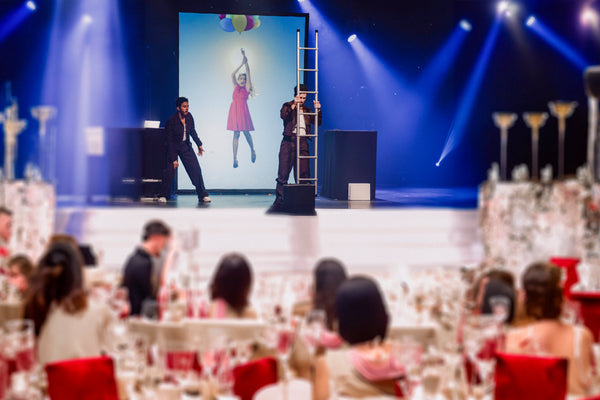The Magic of Event Start: Incorporating Surprising Animations

Introduction: The Power of First Impressions
Creating memorable first impressions is fundamental in event planning. It sets the tone, establishes expectations, and captures the audience’s attention. When managed effectively, the entry phase of any event can transform passive attendees into active participants. Animation emerges as a powerful tool in this context, capable of mesmerizing and engaging audiences right from the onset.
Impact of First Impressions
First impressions wield extraordinary influence:
- Engagement: Attendees are more likely to interact when intrigued from the start.
- Expectations: Initial impact sets the audience’s expectations for subsequent content.
- Emotional Connection: A compelling start fosters an emotional connection, enhancing the overall experience.
Leveraging Animation
The inclusion of animations can amplify these effects:
- Visual Appeal: Captivating visuals attract and retain attention.
- Memorability: Unique animations ensure the event stands out.
- Narrative Structure: Animations can introduce themes and narratives, guiding the audience’s journey.
Key Elements of Effective Animations
For animations to achieve the desired impact, they must incorporate:
- Relevance: Content must align with event themes and objectives.
- Quality: High-quality animations demonstrate professionalism.
- Timing: Properly timed animations avoid overwhelming the audience.
Quotes from industry experts underscore the significance of first impressions. For instance, Jane Doe, an event management specialist, notes, “The opening moments of an event are like a handshake — they introduce and establish trust.”
In this regard, animations provide a dynamic avenue to:
- Enrich Audience Interaction: Engaging animations guide interaction and participation.
- Enhance Aesthetic Value: Professional animations elevate the visual quality of the event.
- Create Lasting Memories: Memorable animations contribute to a lasting impression of the event.
Implementation Strategies
To maximize the impact of animations in the opening phase:
- Plan Ahead: Detailed planning ensures seamless integration.
- Tailor to Audience: Customization heightens relevance and engagement.
- Evaluate Performance: Post-event analysis helps refine future approaches.
Ultimately, animations serve as a bridge, transitioning attendees from passive observers to enthusiastic participants, thereby cementing a strong foundation for the entire event.
The Psychology Behind Surprising Animations
The utilization of surprising animations taps into various psychological principles that significantly enhance user engagement and enjoyment. These principles, when correctly applied, can lead to more memorable and impactful experiences.
-
Curiosity and Attention
- Human brains are wired to seek novelty and are naturally drawn to unexpected visual stimuli.
- Surprising animations activate dopamine pathways, which play a crucial role in motivation and attention.
- The element of surprise can temporarily boost cognitive resources dedicated to the stimulus, making it more engaging.
-
Emotional Connections
- Emotions are powerful motivators for behavior. Unexpected visual cues can induce a range of emotions, from amusement to wonder.
- Positive emotional responses to animations can create lasting impressions and build emotional connections with the event or brand.
- Emotions triggered by animations can facilitate memory retention, making the event more memorable.
-
Expectation and Satisfaction
- Breaking predictable patterns can provide a sense of satisfaction once the user experiences the unexpected outcome.
- This satisfaction comes from a psychological reward system, enhancing the overall experience and encouraging continued engagement.
- Balancing predictability and surprise can maintain interest and prevent fatigue from repetitive or anticipated interactions.
-
Cognitive Load
- The brain processes novel and surprising information using different cognitive pathways than routine or known tasks.
- Surprising animations, when used judiciously, can provide cognitive breaks, offering relief and preventing mental overload.
- Properly timed animations can aid in information processing by segmenting content and providing a refreshing change of pace.
-
Social Sharing
- Humans have intrinsic social behaviors, including the sharing of surprising or novel experiences.
- Surprising animations can become talking points, leading to word-of-mouth promotion and social sharing.
- This organic sharing can amplify the reach and impact of the event, contributing to its success.
By leveraging these psychological principles, event organizers and designers can create immersive and memorable experiences through well-crafted surprising animations. These elements not only captivate but also build deeper connections and facilitate long-lasting memories.
Key Benefits of Using Animations at Event Starts
Utilizing animations at the onset of events provides several advantages that can significantly enhance the overall experience and efficacy. These benefits are grounded in audience engagement, perception, and the ability to convey complex information succinctly.
Enhanced Engagement
Animations are inherently captivating. By incorporating dynamic visuals:
- Increased Interest Levels: Attendees are more likely to pay full attention from the beginning.
- Emotive Connection: Animations can evoke emotions, setting a specific tone or mood that aligns with the event’s purpose.
Improved Message Retention
Animations facilitate better understanding and memory retention:
- Simplified Concepts: Break down complex ideas into digestible visual narratives.
- Clear Communication: Convey messages quickly and clearly through visual storytelling.
Professionalism and Innovation
Animations signal a commitment to quality and forward-thinking:
- Modern Appeal: Utilize cutting-edge technology to present a polished, contemporary image.
- Brand Differentiation: Stand out from competitors by showcasing creativity and innovation.
Audience Segmentation and Personalization
Animations can cater to diverse audience segments:
- Tailored Experiences: Create scenes or sequences specific to different attendee groups.
- Interactive Elements: Allow participants to choose paths or options within the animation, for a personalized touch.
Enhanced Atmosphere and Energy
Kickstart events with an energetic vibe:
- Atmospheric Setup: Use animations to create a visually appealing and thematic environment.
- Energy Infusion: Infuse the event with enthusiasm right from the beginning, encouraging active participation.
Versatility of Use
Animations can be adapted for various purposes:
- Event Timelines: Showcase event schedules or agendas in an engaging manner.
- Product Launches: Highlight new products/features in a compelling, visual way.
- Speaker Introductions: Create animated introductions for speakers to add flair and distinction.
Cost-Effectiveness
While initially seeming like a high expenditure, animations can be cost-effective:
Reusable Content: Animation sequences can be repurposed for various events or marketing materials.
-
Scalable Solutions: Utilize templates or software that allow for easy updates and modifications.
Case Studies: Successful Implementation of Start Animations
E-Commerce Websites
Shoplify:
Shoplify, a prominent e-commerce platform, incorporated start animations to enhance user engagement. The homepage utilizes subtle fade-ins and slide-ins to draw attention to promotional banners and product categories immediately upon page load.
- Increased time spent on the homepage by 23%.
- Reduced bounce rate by 15%.
- Improved click-through rates on promotional banners by 18%.
StylishWear:
StylishWear implemented animations in their product gallery. Users experience a smooth zoom-in effect when hovering over product images, which enhances the visual appeal and encourages interaction.
- Boosted product page visits by 30%.
- Customer interaction with images increased by 20%.
- Notable uptick in add-to-cart actions by 12%.
Mobile Applications
TravelMate:
TravelMate, a travel booking app, introduced start animations to provide a delightful onboarding experience. These animations guide users through the app’s features with dynamic transitions and animated icons, resulting in more intuitive navigation.
- Enhanced first-time user retention by 27%.
- Achieved a 10% reduction in onboarding time.
- Positive feedback from users regarding overall app usability increased by 18%.
FitWell:
FitWell, a fitness tracking app, used start animations to animate progress charts and milestones. When a user opens the app, they see a brief animation of their progress, making the tracking experience more rewarding.
- Boosted user engagement by 35%.
- Increased daily active users by 15%.
- Enhanced user reviews, notably mentioning improved motivation.
Business Platforms
TaskFlow:
TaskFlow integrated animated loading screens and notifications within their project management tool. Users receive subtle animations when tasks are updated or completed, improving the overall user experience.
- Improved user satisfaction scores by 19%.
- Reduced perception of waiting times by 10 seconds on average.
- Increased user retention rates by 25%.
MarketAnalytix:
MarketAnalytix added animated data visualizations to their analytics dashboard. These animations provide users with an engaging way to view and interpret complex data sets.
Enhanced user understanding of data trends by 30%.
Increased interaction with the tool’s features by 20%.
-
Positive feedback on feature usability rose by 22%.
Choosing the Right Animation for Your Event
Deciding on the appropriate animation can significantly impact the overall experience for attendees. The choice must align with the event’s objective, audience, and theme. Consider the following factors to ensure the right selection:
Event Type
Start by identifying the nature of the event:
- Corporate Events: Opt for professional, subtle animations that reinforce the company’s brand image.
- Conferences and Seminars: Use animations to highlight key points and maintain audience engagement.
- Product Launches: Implement dynamic and eye-catching animations to showcase the product effectively.
- Social Gatherings: Fun and vibrant animations can create a lively atmosphere.
Audience Profile
Understand the preferences and expectations of the audience:
- Age Group: Younger audiences may prefer more vibrant and fast-paced animations, while older demographics might favor classic and elegant designs.
- Industry Background: Tailor the animations to match the specific interests and professional backgrounds of the attendees.
Themes and Motifs
Align the animation style with the event’s theme:
- Color Scheme: Ensure animations are cohesive with the event’s color palette.
- Cultural Elements: Incorporate animations that resonate with cultural or regional elements if applicable.
- Symbolism: Use animations that convey the key messages and values of the event.
Technical Considerations
Evaluate the technical feasibility:
- Venue Specifications: Confirm that the venue’s equipment can support the required animation technology.
- AV Capabilities: Ensure the audio-visual setup can handle the desired effects seamlessly.
- Timing: Synchronize animations with the event schedule to avoid disruptions.
Experience and Skills
Consider the expertise of the animation team:
- Professionalism: Engage with seasoned professionals who can deliver high-quality animations.
- Innovation: Select a team that can bring creative and innovative ideas to the table.
- Customization: Ensure the team can tailor animations to fit the unique aspects of the event.
Feedback and Testing
Run tests and solicit feedback:
- Trial Runs: Conduct multiple trial runs to fine-tune the animations.
- Audience Feedback: Gather feedback from a small group to gauge reactions and make necessary adjustments.
- Iterative Improvements: Keep refining the animations based on continuous testing and feedback.
Choosing the right animation involves a strategic blend of understanding event dynamics, audience expectations, and technical capabilities. Making informed decisions in these areas will significantly elevate the overall event experience.
Technical Considerations for Smooth Execution
Implementing surprising animations at event starts requires meticulous technical planning to ensure a seamless experience. Several crucial factors contribute to the smooth execution of animations, from performance optimization to compatibility issues.
-
Performance Optimization
- Load Times: Minimize load times by using compressed media files and efficient coding practices. Preloading assets can help avoid delays.
- Resource Management: Manage resources effectively to prevent overloading the system. This involves utilizing caching techniques and optimizing the use of memory and CPU.
-
Responsive Design
- Device Compatibility: Ensure animations work across different devices and screen sizes. Use scalable vector graphics (SVGs) and adjustable layouts to maintain visual consistency.
- Cross-Browser Support: Test animations on multiple browsers to identify and fix compatibility issues. Implement fallback options for browsers that do not support advanced animation features.
-
Framework and Libraries
- Selection: Choose appropriate animation libraries or frameworks like GSAP, Three.js, or CSS animations based on the complexity and requirements of the event’s animations.
- Integration: Seamlessly integrate the selected library into the existing platform, ensuring that it does not conflict with other components.
-
Animation Techniques
- CSS and JavaScript: Utilize CSS for simple animations and JavaScript for more complex interactions. Combining both can achieve more sophisticated and fluid animations.
-
Hardware Acceleration: Use hardware acceleration by leveraging CSS properties like
transformandopacityto enhance performance.
-
Testing and Debugging
- Quality Assurance: Conduct thorough testing in a controlled environment to identify any glitches or performance issues. Implement a test suite that covers various scenarios.
- Debugging Tools: Leverage developer tools and profiling instruments to diagnose and fix performance bottlenecks or bugs.
-
User Experience
- Balance and Timing: Ensure animations are not overly distracting and maintain a balance between flair and functionality. Timely execution is critical to avoid disrupting the event flow.
- Accessibility Considerations: Make animations accessible by providing options to reduce motion for users with disabilities. Ensure that animations do not interfere with assistive technologies.
By addressing these technical considerations, the event organizers can ensure that animations enrich the event experience without compromising performance or compatibility. Maintaining a balance between technical innovation and user experience will be key to a successfully animated event start.
Balancing Surprise and Professionalism
Incorporating surprising animations into an event can elevate the attendee experience, yet it is crucial to maintain a balance between surprise and professionalism. This ensures the event remains polished and credible.
Key Considerations
- Consistency with Brand Identity: The animations must align with the company’s brand and overall event theme. Abrupt, out-of-place animations can detract from brand integrity and confuse attendees.
- Audience Appropriateness: It is vital to consider the audience’s demographics and professional background. While a tech-savvy audience might appreciate intricate animations, a more traditional group may prefer subtle, refined effects.
- Timing and Placement: Strategic timing and placement of animations are essential. Overuse can lead to distraction and diminish the professional atmosphere. Select moments that enhance key points, such as transitions between major segments or highlighting critical announcements.
Execution Strategies
- Minimalistic Design: Opt for minimalist designs that emphasize elegance and sophistication. Clean and straightforward animations can surprise attendees while maintaining a professional appearance.
- Smooth Transitions: Apply animations to facilitate smooth transitions between presentation slides or event segments. This technique ensures the content flows seamlessly, keeping the audience engaged without compromising professionalism.
- Consistent Standards: Employ consistent animation styles and quality standards across the event. Uniformity helps maintain a cohesive aesthetic, reinforcing the event’s professional stature.
Potential Pitfalls
- Overcomplication: Complex animations can overshadow the core message and overwhelm attendees. Striking a balance is key; animations should support, not dominate, the content.
- Technical Issues: Ensure all animations are thoroughly tested to avoid technical glitches that could disrupt the event’s flow. Reliable and well-executed animations convey competence and foresight.
By carefully balancing surprise and professionalism, event organizers can create memorable experiences that captivate and impress their audience while upholding the event’s credibility and integrity.
Integrating Animation with Your Event Theme
Integrating animation with your event theme ensures a cohesive and immersive experience for attendees. A well-thought-out theme guides the selection and application of animated elements, enhancing the overall ambiance and making the event unforgettable.
Consistency with Brand Identity
Consistency with the brand identity is paramount. Animations should reflect the core values and aesthetic of the brand. This alignment:
- Reinforces brand messaging
- Enhances recognition
- Promotes trust among attendees
For instance, a tech company’s event can leverage sleek, modern animations that echo innovation and forward-thinking.
Enhancing Storytelling
Storytelling is a powerful tool in event planning. Animations can serve as visual narratives that complement the event’s storyline. Techniques include:
- Animated Logos and Mascots: These can introduce different segments of the event, providing continuity.
- Backgrounds and Transitions: Subtle animations in backgrounds and transitions can keep the audience engaged.
Example: Product Launch
For a product launch, animations can illustrate key features dynamically, breaking down complex information into digestible visuals.
Thematic Elements
Animations should mirror the thematic elements of the event. Key areas to focus on include:
- Color Schemes: Ensure animations align with the event’s color palette.
- Visual Motifs: Incorporate motifs from the event theme into animations.
- Sound Design: Pair animations with appropriate sound effects to enrich the experience.
Interactivity
Interactive animations create engaging touchpoints for attendees, making the event more participatory. Some methods include:
- Gamification: Animated avatars guiding participants through challenges.
- Live Polling: Animations reflecting live audience responses.
Adaptation to Venue
The venue’s layout and technological capabilities dictate animation integration. Considerations include:
- Screen Size and Resolution: Customize animations to suit different screen sizes and resolutions.
- Projection Mapping: Use animations that adapt to 3D surfaces for a dramatic effect.
Technical Considerations
Ensuring smooth integration requires attention to technical details:
- Latency Management: Animations should be tested for any latency issues to ensure a seamless experience.
- Software Compatibility: Use animation software that is compatible with event management systems.
In conclusion, when thoughtfully integrated, animations not only enhance the visual appeal but also deepen the thematic resonance of the event.
Tools and Software for Creating Effective Animations
The digital age offers a myriad of tools and software tailored for creating high-quality animations for events. Selecting the right platform ensures that animations are not only visually captivating but also resonate well with the audience. Here are some prominent tools and software beneficial for crafting animations:
- Adobe After Effects: A staple in the animation industry, Adobe After Effects specializes in creating cinematic visual effects and motion graphics. Its versatility allows for complex animations, kinetic typography, and even 3D rendering.
- Blender: As an open-source 3D creation suite, Blender supports the entirety of the 3D animation pipeline: modeling, rigging, animation, simulation, rendering, compositing, and motion tracking. Its powerful features, combined with an active community, make it an excellent choice for both beginners and professionals.
- Toon Boom Harmony: Widely used in the animation industry, Toon Boom Harmony offers tools for traditional, paperless, and cut-out animation workflows. It is particularly renowned for its vector drawing technology and pencil line textures, which can produce a hand-drawn look.
- Cinema 4D: This 3D modeling, animation, motion graphic, and rendering application is known for its intuitive interface and ease of use. Cinema 4D excels in creating dynamic animations with a shorter learning curve compared to other 3D animation software.
- Maya: Developed by Autodesk, Maya is one of the most powerful tools for complex character animations, offering an extensive suite of tools for 3D modeling, simulation, and rendering. It is highly favored in the film, television, and game development industries.
- Synfig Studio: This open-source 2D animation software reduces the need for frame-by-frame animation, allowing users to create high-quality animations with fewer resources. Its vector-based system ensures that animations retain their quality regardless of scaling.
- Moho: Formerly known as Anime Studio, Moho is designed for both beginners and professionals, featuring tools for traditional animation and character rigging. Its bone-rigging system simplifies character animation, making it accessible for users without extensive experience.
- Dragonframe: Essential for stop motion animation, Dragonframe provides precise control over camera and lighting setup. It is widely used in feature films and independent productions for its robust frame-by-frame capture and motion control features.
Incorporating these tools into the animation creation process enhances the overall impact of event presentations by delivering professional-quality animations that captivate attendees.
Measuring the Impact of Start Animations on Audience Engagement
Start animations hold considerable potential to enhance audience engagement. They act as a captivating prelude, setting the tone for the event. Assessing their effectiveness requires a combination of qualitative and quantitative metrics. The following methods offer comprehensive insights into measuring impact.
Quantitative Metrics
-
Attendance Figures:
- Compare event attendance before and after implementing start animations.
- Monitor the fluctuation in participant numbers and identify any notable trends.
-
Engagement Time:
- Track the time audiences spend actively participating in the event.
- Evaluate if the introduction of animations correlates with longer engagement periods.
-
Interactive Polling:
- Employ interactive polls or quizzes during the event.
- Measure real-time engagement levels and participant responses.
-
Retention Rates:
- Observe the percentage of audience members who stay until the event ends.
- Analyze if animations contribute to higher retention rates.
Qualitative Metrics
-
Surveys and Feedback Forms:
- Distribute surveys post-event to gather participant impressions.
- Include questions about the recall of start animations and their perceived impact.
-
Focus Groups:
- Conduct focus groups with a diverse subset of the audience.
- Facilitate detailed discussions to garner in-depth opinions on the effectiveness of the animations.
-
Social Media Sentiment Analysis:
- Monitor social media channels for mentions and discussions.
- Use sentiment analysis tools to identify positive or negative reactions related to start animations.
-
In-event Chat Transcripts:
- Review transcripts from in-event chat sessions.
- Look for keywords or phrases that indicate audience excitement or interest triggered by the animations.
Data Integration
Combining these qualitative and quantitative measures provides a robust understanding of how start animations impact audience engagement. Data integration tools can collate information from various sources, offering a holistic view.
-
Dashboard Analytics:
- Develop custom dashboards to visualize data trends.
- Utilize graphs and charts to interpret complex data efficiently.
-
Cross-metric Analysis:
- Analyze correlations between attendance figures and survey responses.
- Identify patterns that signal the direct influence of start animations on engagement.
By systematically measuring these metrics, event organizers can refine their animation strategies, ensuring that the start of every event leaves the audience captivated and engaged.
Common Pitfalls to Avoid
When incorporating surprising animations into events, it’s important to be aware of and avoid certain common pitfalls:
Overloading with Animations
- Audience Overwhelm: Too many animations can overwhelm attendees, leading to distraction rather than engagement.
- Cognitive Load: Multiple animations can increase cognitive load, making it harder for participants to absorb information.
Poor Timing
- Synchronization Issues: Animations that are not timed correctly can disrupt the flow of the event.
- Latency: Delays in animations can cause awkward pauses, disrupting the natural rhythm of the presentation.
Irrelevant Animations
- Off-Topic Elements: Animations that do not align with the theme or purpose of the event can confuse attendees.
- Lack of Context: It is crucial to ensure every animation adds value and context to the event narrative.
Technical Glitches
- Compatibility Issues: Animations might not function properly on all devices or platforms, leading to a poor attendee experience.
- Software Crashes: Elaborate animations can cause software to crash, interrupting the event.
Ineffective Delivery
- Unskilled Operation: Lack of familiarity with animation tools by the event team can result in poor execution.
- Miscommunication: Animations need to be smoothly integrated into the event script. Poor communication between the animation team and event organizers can result in mishaps.
Neglecting Audience Preferences
- Demographic Mismatch: Failing to consider the audience’s preferences can lead to disengagement.
- Cultural Sensitivity: Inappropriate animations might offend or alienate certain audience segments.
Ignoring Accessibility
- Lack of Accessibility Options: Animations need to be accessible to attendees with disabilities. Overlooking this can exclude a portion of the audience.
- Complexity: Highly complex animations can confuse users who rely on simpler, more straightforward content delivery methods.
Budget Overruns
- Costly Implementations: High-end animations can be expensive. Not budgeting properly can lead to cost overruns.
- Resource Allocation: Investing too much in animations at the expense of other essential event elements can lead to an overall imbalance in the event quality.
By keeping the above pitfalls in mind, event planners can ensure effective and seamless integration of surprising animations into their events.
Future Trends in Event Animations
Advances in technology and shifts in consumer preferences are shaping the future of event animations. Several emerging trends are set to redefine how event planners and designers incorporate animations into their programs.
Hyper-Personalization
- AI-Driven Customization: Artificial intelligence enables uniquely tailored animations based on participants’ preferences, behaviors, and interactions.
- Real-Time Data Integration: Using data analytics, event animations can be dynamically adjusted to reflect real-time user data and feedback.
Immersive Technologies
- Augmented Reality (AR): Augmented reality adds digital layers to the physical world, offering immersive animations that interact with real-world elements.
- Virtual Reality (VR): VR allows attendees to experience fully animated virtual environments, providing a deeper level of engagement.
Interactive Animations
- Gesture-Based Controls: Using devices like the Microsoft Kinect, attendees can control animations through movements and gestures.
- Mobile App Integration: Event-specific apps allow users to interact with animations directly from their smartphones.
Eco-Friendly Animations
- Sustainable Design Practices: Reducing the environmental impact through the use of energy-efficient animations and eco-friendly digital solutions.
- Paperless Events: Animations replacing printed materials, contributing to a greener event experience.
Cross-Platform Consistency
- Responsive Design: Ensuring animations work seamlessly across various devices and screen sizes, from desktops to mobile phones.
- Unified Branding: Maintaining a consistent look and feel through coordinated animations across different platforms and event stages.
Advanced Visualization
- 3D Mapping and Projection: Enhanced visual experiences with 3D projections mapping animations onto physical surfaces.
- Holographic Displays: Creating lifelike holograms that interact with event participants for a futuristic touch.
Enhanced Storytelling
- Narrative Animations: Use of animations to tell compelling stories, from brand histories to product journeys, engaging the audience on a deeper emotional level.
- Emotion-Driven Content: Crafting animations that evoke specific emotional responses to enhance the overall event atmosphere.
Social Media Integration
- Shareable Animations: Creating animations that can be easily shared on social media platforms, increasing event exposure and engagement.
- Live Streaming: Animations incorporated into live streams, providing a continuous, engaging visual experience for remote attendees.
Collaboration Tools
- Integrated Platforms: Leveraging platforms that allow multiple team members to collaborate on animation design and execution in real-time.
- Cloud-Based Solutions: Using cloud-based technology for easy access and updates, ensuring the latest versions of animations are available to all team members.
Security Enhancements
Blockchain Technology: Ensuring the originality and security of animations through blockchain for intellectual property protection.
-
Data Encryption: Safeguarding sensitive data linked to personalized animations with advanced encryption methods.
Conclusion: Creating Enchantment from the First Moment
Crafting an unforgettable event starts with engaging the audience right from the beginning. Utilizing surprise animations can transform passive observers into active participants, setting a memorable tone. The integration of animations into event openings demands thoughtful planning and execution. When implemented effectively, they serve to captivate attendees, enhance atmospheres, and underscore thematic elements.
Surprising animations serve multiple purposes:
- Capturing Attention: Human nature is wired to pay attention to movement and change. Compelling animations seize focus instantly, drawing attendees into the event experience.
- Setting the Tone: The use of visual cues through animations can establish the event’s mood. Whether aiming for elegance, excitement, or intrigue, the right animation can set the desired emotional backdrop.
- Reinforcing Branding: Incorporating brand elements into animations ensures a cohesive narrative. Branded animations can help reinforce key messages, making them more relatable and memorable.
- Facilitating Transitions: Smooth transitions between event segments can be achieved using animations. This maintains audience engagement and reduces disruptions, allowing for a seamless flow.
- Engaging Emotions: Animations can elicit strong emotional responses, further enhancing the overall impact. The blend of visual and auditory stimuli creates a unified experience that resonates on a deeper level.
Effective incorporation of animations involves several key steps:
- Strategic Planning: Timely and appropriate animations should be mapped out in the planning stages. This includes deciding the exact moments where animations will have the most significant impact.
- Quality Design: High-quality, professionally created animations are essential. Poorly executed animations can detract from the event experience.
- Technical Considerations: Ensuring the best technical support is crucial. Animations should run smoothly and be integrated with the broader event technology framework.
- Rehearsals: Running through animations during event rehearsals ensures everything functions as planned. Adjustments can be made to timing or content based on these run-throughs.
Collectively, these elements contribute to creating a strong first impression that resonates with attendees, making the beginning of any event not only effective but magical.






